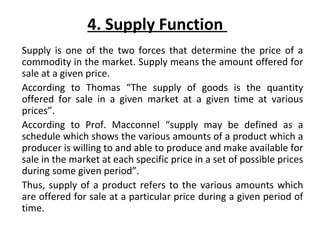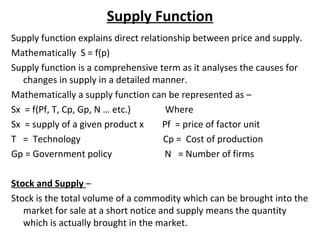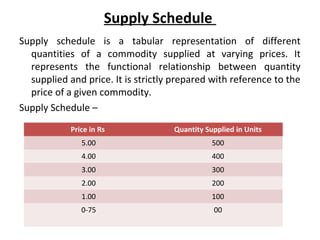The document discusses the concept of supply in economics. It defines supply as the quantity of a commodity producers are willing and able to sell at a given price over a specific time period. The supply of a product is determined by several factors including its price, production costs, technology, government policies, and more. The supply schedule shows the relationship between price and quantity supplied, while the supply curve illustrates this graphically as an upward-sloping curve. Market equilibrium occurs at the price where quantity supplied equals quantity demanded. A change in the supply curve results from changes in its determinants and causes the equilibrium price and quantity to also change.



















